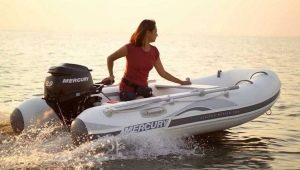PVC boat pads: features and manufacturing
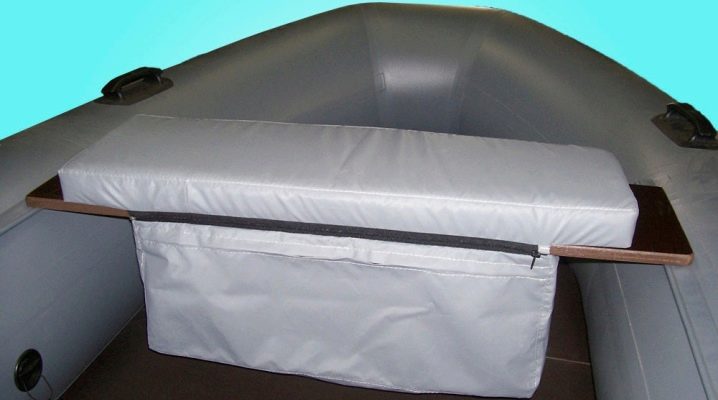
PVC boats are very useful and practical. But it is difficult to use them ready-made. Be sure to take care of the soft pads on the cans for PVC boats.
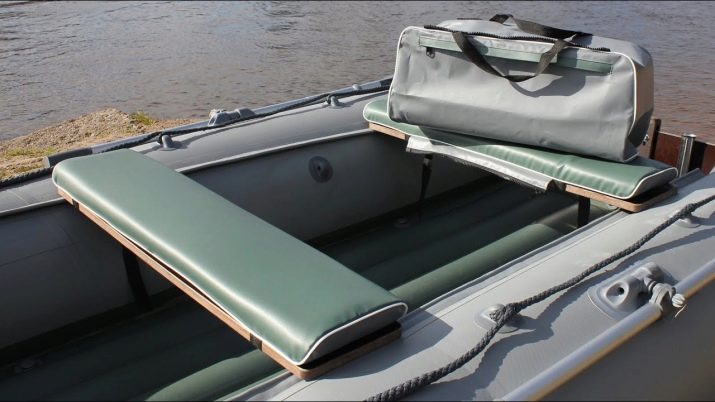
Features and why you need it
By purchasing a set of soft pads, you can complete the completion of the inflatable boat. It depends on whether it will be comfortable to use the boat and ride it for various purposes. Any self-respecting manufacturer includes a capacious sealed bag in the delivery set. It is designed so that the cargo fits inside without taking up useful space in the boat. Another important feature of the bag is the watertight seams.
Typical varieties have the following dimensions:
- 0.6-0.7 by 0.2-0.22;
- 0.6-0.7 by 0.23-0.3;
- 0.71-0.8 by 0.2-0.22;
- 1.01-1.1 by 0.2-0.22;
- 1.11-1.2 by 0.23-0.3 m.

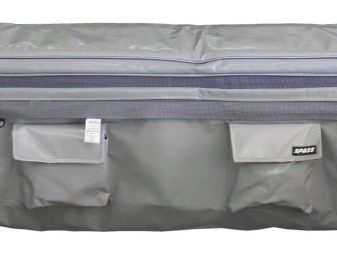
It may be necessary to purchase an overlay for a jar with a bag of increased tightness:
- fishermen;
- hunters;
- tourists;
- other adventurers and travelers.

Often they buy 2 pads at once. Then it will be possible to put things into bags, and comfortably accommodate yourself in the boat. There will be no problems either when stopping (when, for example, they cast a fishing rod), or when moving. A pair of jar bags allows you to hold almost all the items that you need for a trip or business trip.The branded bags that are also included in the kit are usually designed so that the linings are easy to release, and the containers themselves are easily worn on land and carried in cars.
The pads themselves are designed so so that they are suitable for both PVC and fiberglass boats. A special type of PVC is impervious to water. A layer of foam rubber 0.05 m is sometimes placed inside the product. Steel buttons are often used to fasten the pads on the seats to the hulls of the boats. You can order such products in many online stores.
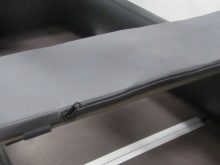
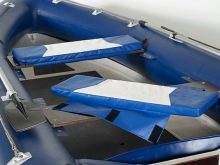
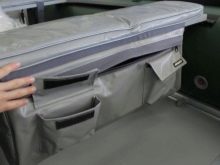
More about variety and choice
Branded soft pads are available, as already mentioned, in a wide range. Thanks to this, the selection of the optimal variant does not present any particular problems. In addition to the products with foam material described above, there is another type - rectangular polyurethane plates covered with waterproof covers. In this case, it is necessary to fasten the lining to the jar with straps or valves, supplemented with a Velcro fastener.
A similar product is placed on the boat in a short time. Moreover, it does not need to be removed when the boat is packed into a carrying bag. Returning to the previously described type (with a bag), it should be noted that it is ideal for storage in the field:
- documents;
- weapons and firearms;
- spare clothes;
- fishing tackle and so on.
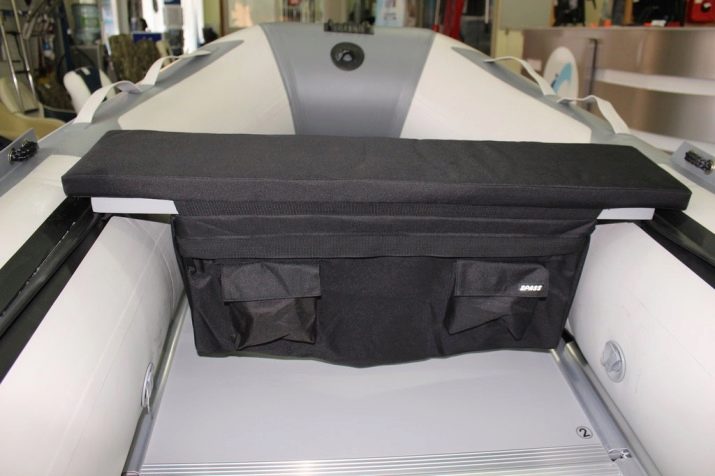
In the basic configuration of motor and rowing boats, hard seats are mainly used. However, quite a few models do not provide such a complete set. This does not create any special problems - it is not difficult to make a hard seat with your own hands. But it is better to buy soft pads at specialized points - it is much more difficult to make an equally perfect product on your own. For standard rigid structures can be used:
- baked plywood of many layers (optionally varnished);
- durable plastic;
- textolite.
The first type is quite cheap and, with high-quality manufacturing, is quite reliable. Responsible manufacturers impregnate plywood with a special mixture not only for the entire thickness, but also at the ends. The difference between the seats can also be related to the method of fastening.



Stationary products (inserts into cylinders) are considered a comfortable option. This fastening can be practiced for both soft and hard rubbers.
How to do it yourself
As a basis for the can, you can take the folding seat from the delivery set. First, the inclined part is cut off, achieving a small exit of the tubes beyond the landing board. When the required width is measured, the transverse tubes are cut off, and the middle is removed. Important: the height of the seat is selected according to their own anatomical features, so that it is comfortable. Docking is carried out using inserts corresponding to the diameter of the tubes.
Then you need to work with the holes for the tarpaulin. 4 self-tapping screws are introduced into them. Both the tubes and the board are drilled coaxially. Insert suitable bolts into the holes. In order for the back to have support, they take tourist rugs, sometimes even larger ones.
Taking up the manufacture of the lining itself, the PVC block is supplemented with Velcro, similar to those used in clothes. Another option is waterproof, extra strong 420D PVC nylon. Inside you can lay soft foam polyethylene. An alternative option is a 900 density Oxford fabric overlay.

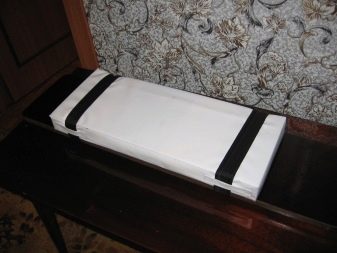
The color is chosen solely at your discretion. You need to cut the fabric with a margin of at least 0.01 m wider than the can itself. But it is better not to save on this in order to avoid problems when fitting.There is no need for drawings, all fitting is carried out in a “natural” way. A wide fragment is bent so as not to confuse where the front side will be.
At the next stage, the strip of fabric is folded on three sides. A small fragment is designed to hold the shop from the inside. It is advised to connect large and small fragments with needles (pins). You need to stitch the resulting workpiece in two seams on a sewing machine. Important: after the final assembly and trimming, you still need to leave about 0.015 m of fabric for the hem.
To do without a bag, you can sew Velcro on the lining. Two planks at the ends are adjusted “approximately” so that they only “enter”. It is better to replace the isol with foam, otherwise the product will sag. No need to strive to do everything smoothly and without folds. If the technology is followed, a home-made overlay on a boat can will be no worse than the factory version.
To learn how to make your own boat seat pad, see the following video.




























